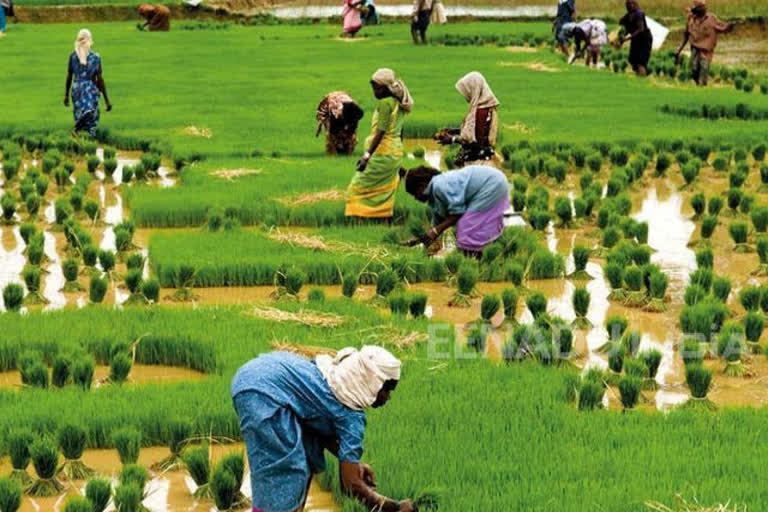Hyderabad: Of late, farmers have been facing losses with the ‘not-so-helpful’ support price of the Central and State Governments. It has been declared by the Central Government that every year, starting from the month of October in the current year to September, the following year, it should be regarded as the ‘New Marketing Year’ for the farmers. However, this year’s marketing and sales of the farm produce did not seem to be quite in favor of the farmers.
This year, buying price of the produce has shot to rock-bottom, since the time of harvest itself. The buyers are showcasing the result of excess rains due to which the quality of the produce is said to be below average and thus the buyers and middlemen quote lowest prices for the produce. Even the GOI Scheme, ‘Pradhan Mantri Annadaata Aay SanraksHan Abhiyan (PM-AASHA), that has been introduced around 2 years ago, aimed towards ensuring remunerative prices to farmers for their product, is also not helping much.
There are about 22,000 Grameen Agriculture Markets of which the Central Government has promised to improvise upon, but which is not materialized till date.
Lack of Funds resulting in everlasting problems
Both the central and state Governments have not budgeted for the guaranteed purchase of farm produce under the Market Price Stabilization, as required for the farmers. The harvested produce in June reaches the market in September, which is the Kharif season. During June itself, the Government declares the market price of such crops. However, the market price is applicable only from the New Marketing Year, which is October. Thus, the farmers are at loss for their initial produce of the year, on an annual basis!!
The Government of Telangana had already proposed to the Central Government on implementing the support price starting from September itself, to which there had been no response from the authorities. The Commission for Agricultural Costs and Prices (CACP) in its recent survey report, had mentioned that during the last year too, quite a number of states have in fact not received the right amount of help in the form of the promised support price.
It further recommended to the Central Government, that agricultural produce like Cotton, Oilseeds, Corn and other millets should also be considered eligible for payment/reimbursement under the Price Deficiency Payment Scheme (PDPS). The State Government of Madhya Pradesh had already implemented this scheme under the nomenclature – ‘Bhavantar Bhugtaan Yojana, (BBY), but the scheme had to be dropped unceremoniously.
Under PDP Scheme, the farmer is paid the deficiency amount between the actual modal / market price at which the produce is sold and the price declared by the Government, if any. However, the middlemen of the Madhya Pradesh agri-markets have misused the BBY scheme, which probably led to the cancellation of the scheme. Keeping in view, these turn of events, the CACP has recommended the implementation of the BBY scheme post required changes, starting this year.
The Commission further recommended that the differential amount after taking into consideration, the previous 3-4 years’ market price and the current year’s support price, may be paid to the farmer directly. Irrespective of all these recommendations, the current marketing year’s sale proceeds have been taking place.
The State Governments have been requesting the central Government to purchase the farm produce, since they are the ones who have been deciding on the sale price of the produce. To this, the central Government has retaliated that they would be able to purchase about 25% each of the total crop pertaining to certain grains like the oilseeds, millets, pulses etc.
Read more:States in financial doldrums
The central Government used to purchase almost 40% to 50% of the total crop, however, starting this year, it had declared to purchase just about 25%. The states, during the recent National Agriculture Conference in Delhi, have stated that unless the central Government guarantees purchase of at least 40% of the crop, it would be difficult for the farmers to sustain farming requirements. Other option being that the centre funds each state to purchase the minimum guarantee crop.
Further, if the Government purchases just about 25% of the crop, it is up to the farmer to take pains and sell the rest of the crop in open market, which is totally dependent on the demand of the middlemen. This is pushing the farmer into deep-trouble, time and again. Unless a strong political resolve is taken by the states to help the farmer, a policy can never be put in place to increase the purchase quantity from the farmer.
